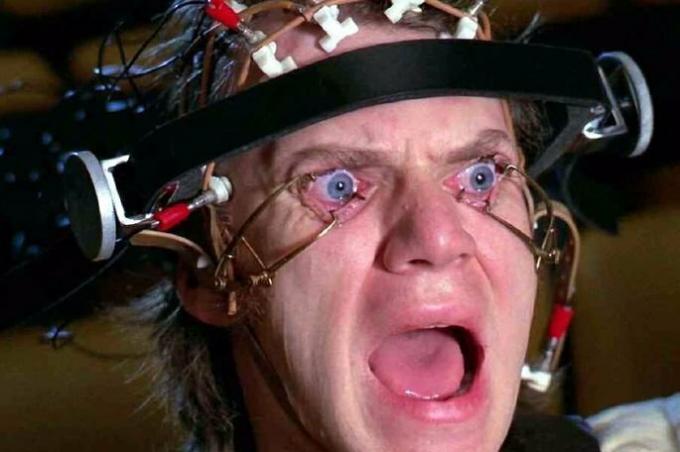Behaviorism is a theory of psychology that evaluates the behavior of humans and animals, based on reasoned analysis and observation of practical facts, such as reactions to stimuli.
Also called behaviorism or behavioral psychology, behaviorism originated in the United States in the early 20th century, as an idea in opposition to the concept of introspective psychology.
The behaviorist or behaviorist theory advocates a more objective psychology. Behaviorists oppose studies based solely on feelings, emotions and thoughts.
The first manifestations of behaviorist psychology appeared at the hands of John Watson (1878 - 1958), an American psychologist who defended the study of observable behavior.
Behaviorism has been the subject of investigation by several scholars. Throughout the research, theories were developed according to the conclusions and interpretations of each one.
Thus, different types of behaviorism were identified, the main ones being methodological behaviorism and radical behaviorism.
Methodological behaviorism or classical behaviorism
Methodological behaviorism is based on valuing what is objective over what is subjective.
Also known as “psychology of the other” and “classical behaviorism”, it is based on the study of the observable and evident behavior, that is, of behavior that the sensory senses can to notice.
The leading name for this type of behaviorism is John B. Watson. Considered the father of the behaviorist school, the psychologist was the precursor of social psychology with a focus on research.
For him, psychology should not exclusively analyze studies of the mind, but behavioral studies. Thus, he believed it was possible to predict human behavior.
Example of methodological behaviorism
Watson's claims about the concept of methodological behaviorism were based on the classical conditioning theory of the Russian physiologist and physician Ivan Pavlov (1849 - 1936).
Pavlov proved that after repeating the experience of ringing a bell several times and then showing the food to his dogs, an association was created between the sound of the bell and the food.
So, even if they didn't see any food, the simple sound of the bell was enough to make the dogs salivate.
called Pavlov's dog, the experiment was a validation of classical conditioning, which holds that behavior cannot be controlled and works almost like an involuntary reflex.
In another experiment, called Little Albert, a baby, who had a calm demeanor, was exposed for a long period to sound stress situations.
At the end of the experiment, the baby abandoned his calm behavior and began to fear situations that previously did not cause any adverse reaction.
In the film A Clockwork Orange (1971), the protagonist, Alex, is subjected to a conditioning method to prevent his violent behavior.

The youth is exposed to violent images while receiving negative stimuli.
radical behaviorism
Radical behaviorism emerged in opposition to methodological behaviorism and claimed that feelings, emotions, and other mentalistic factors do not give rise to conduct; are, in fact, an integral part of it.
Thus, behavior would consist of a mixture of external manifestations of these factors, and the consequence of acts performed.
Developed by Burrhus Frederic Skinner (1904 - 1990), an American psychologist and philosopher, this type of behaviorism is based on a principle called “operant conditioning”.
According to him, the individual controls the way he will behave based on what he learns about the relationship between your behavior and the consequences that your actions have.m possible consequences how:
- positive reinforcement - a prize or gratification as a stimulus for the action performed (for example: giving the dog a cookie when he gives the paw)
- negative reinforcement - withdrawal of an unpleasant stimulus (eg stop wetting or interrupt an electrical current).
- Punishment - sanction for unwanted behavior (eg physical punishment).
Then, it is possible to condition the actions from associations with possible consequences. These associations would be sufficient to condition the behavior.
It is worth noting the use of this type of behaviorism in education, as he argues that learning theory is directly related to the stimuli received by students.
- Give a chocolate to the good students (positive reinforcement);
- Allow students who finish an assignment to leave (negative reinforcement);
- Suspension or physical punishment such as paddles or kneeling in corn (punishments).
In this way, it is intended to create constraints on actions and shape students' behavior.
Thus, it is considered that there are no innate abilities, and that all behavior (including the learning process) can be conditioned.
This does not mean that the student is a passive subject, but that this conditioning is directly linked to the planning of the teaching method and the material used by the educator.
example of radical behaviorism
THE skinner's theory came from an experiment with animals called Skinner's Box or Operant Conditioning Chamber.
The box had a compartment with a kind of command, which when activated responded with a stimulus: food, water, light, images or electric shock.
The animals used in the experiments received the stimuli under different test circumstances:
- each time the command was manipulated,
- in the interaction with the command repeatedly,
- paw manipulations,
- manipulations with the beak or snout, etc.
The experiment concluded that the animals that participated in the tests began to perform more frequently the movements that responded to positive stimuli.
Skinner's box served as a starting point for the scholar to begin to define different behavioral patterns.
Later, Skinner released his teaching machine ("teaching machine"). In it, the student should answer a sequence of questions issued by the machine and advance according to the correct answers.

See too:
- Psychoanalysis
- Structuralism
- communication theories
- Jean Piaget
